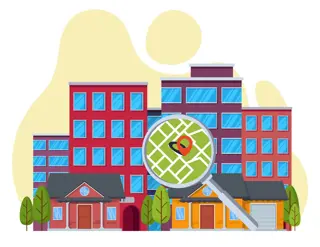Why Location Alone No Longer Rules Mumbai’s Property Market
 For decades, Mumbai’s real estate buyers focused on being close to CBD areas and transport hubs. However, changing urban lifestyles and rising disposable incomes have shifted priorities, putting amenities at the forefront. Buyers now look at access to niche restaurants, nicotine-free cafes, and 24-hour wellness hubs when evaluating properties. This cultural shift shows a preference for micro-communities over macro-location advantages, as seen in the success of projects integrating hyperlocal services.
For decades, Mumbai’s real estate buyers focused on being close to CBD areas and transport hubs. However, changing urban lifestyles and rising disposable incomes have shifted priorities, putting amenities at the forefront. Buyers now look at access to niche restaurants, nicotine-free cafes, and 24-hour wellness hubs when evaluating properties. This cultural shift shows a preference for micro-communities over macro-location advantages, as seen in the success of projects integrating hyperlocal services.
Debunking the Myth: Location vs. Amenities
| Traditional Focus | Modern Priorities |
|---|---|
| Distance to offices/station | Proximity to artisan bakeries and third-wave coffee shops |
| Basic infrastructure (roads, water) | Curated gyms and paws-friendly parks |
| Population density | Niche service clusters (e.g., vegan markets, DIY workshops) |
Developers now see buyers willing to trade off overall location quality if amenities meet specific lifestyle needs. For instance, a smaller luxury apartment near a specialist cheese shop might outdo a larger mid-market property lacking such micro-amenities.
Hyperlocal Amenities Redefining 'Prime'
Miami’s luxury market has long shown that proximity to high-end services creates value. Mumbai now follows suit with:
- Culinary Experience Zones
Developments partnering with well-known chefs to create exclusive dining districts (e.g., Juhu’s upcoming curated food courts). - Sector-Specific Wellness Hubs
Gyms with anti-gravity treadmills, yoga pavilions with saline pools, and AYUSH-certified wellness centers. - Boutique Service Clusters
- Micro-brewery taprooms offering apartment tenants exclusive tasting sessions
- Eco-laundry services with chemical-free cleaning and fabric restoration
- Generation-Specific Leisure
- Senior-friendly parks with tai chi lawns and shady reading nooks
- Teen zones with VR gaming and 3D printing labs
These amenities create micro-ecosystems that replace the need for sweeping metropolitan access, particularly appealing to remote workers seeking in-community convenience.
Case Studies: Mumbai’s Emerging Hotspots
Mulund
The “Prince of the Suburbs” combines affordability with specialized amenities:
- Zone-bound concierge services for pet grooming and luxury car maintenance
- Proximity to Thane-Belapur Corridor tech hubs attracting remote-ready buyers
Panvel
An infrastructure-led boom with projects focusing on:
- Private healthcare partnerships for in-building clinics
- Pop-up culture hubs rotationally hosting art/live music performances
- Smart homes with solar panels and energy-efficient designs
Borivali
Green bond offerings paired with:
- Edible landscapes in apartment complexes
- Trail-to-gym paths linking nature reserves with fitness amenities
Developer Adaptations for Hyperlocal Demand
To meet evolving expectations, builders implement:
Modular Amenity Design
- Programmable spaces for seasonal farmers’ markets or corporate conclaves
- App-integrated service layers for in-building artisan services
Tactical Partnerships
- Collaborations with microbreweries for exclusive resident access tiers
- Subsidies for in-community restaurants during initial occupancy
Differentiated Micro-Marketing
Targeting specific urban tribes with tailored amenity packages:- Luxury vegans: Proximity to plant-based fine dining
- Creative professionals: Around-the-clock co-working cafés
Challenges in Sustaining Hyperlocal Excellence
While demand drives innovation, executing this model requires:
- Arbitrage Management: Balancing niche services with inhabitable population density
- Regulatory Alignment: Streamlining permits for pop-up cultural amenities
- Scalable Exclusivity: Maintaining perceived rarity in hyperlocal offerings
Future Outlook: The Preference Continuum
Looking ahead, Mumbai’s real estate market will likely see:
- Amenity Density Metrics becoming key valuation tools
- Hybrid Developments blending residential and boutique commercial spaces
- Dynamic Pricing Models for service partnerships based on occupancy demand
As urbanites increasingly demand experience-driven living (see: Mulund’s L-shaped luxury complexes with studio spaces for resident pop-ups), the integration of hyperlocal amenities will only intensify making them indispensable in property decisions rather than optional extras.